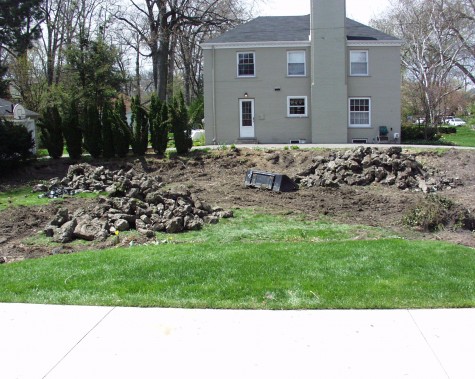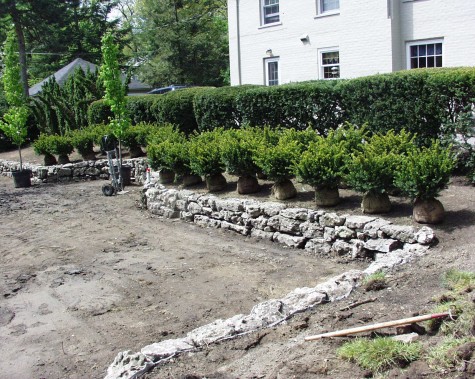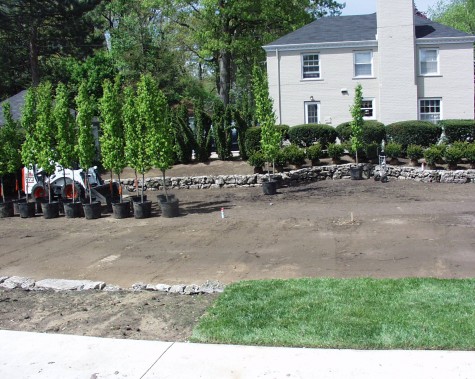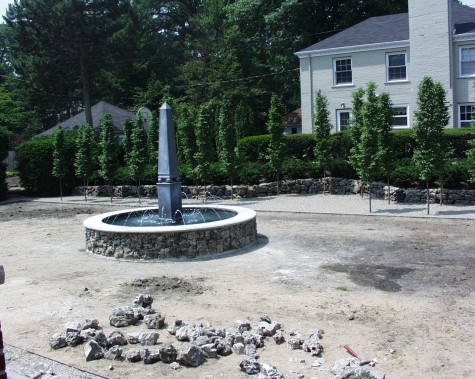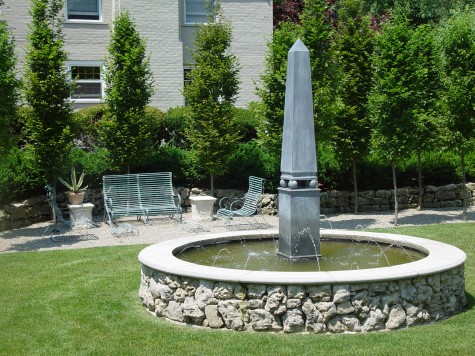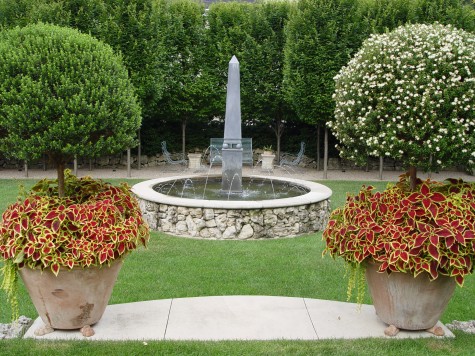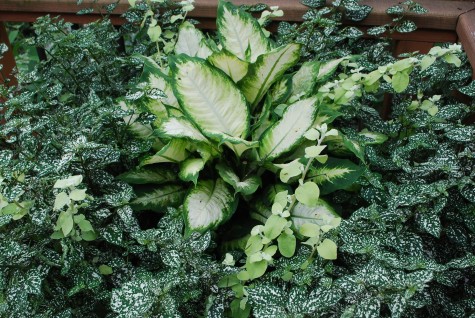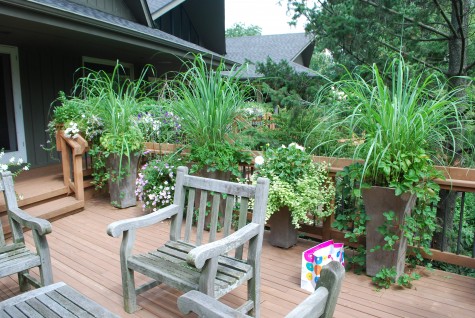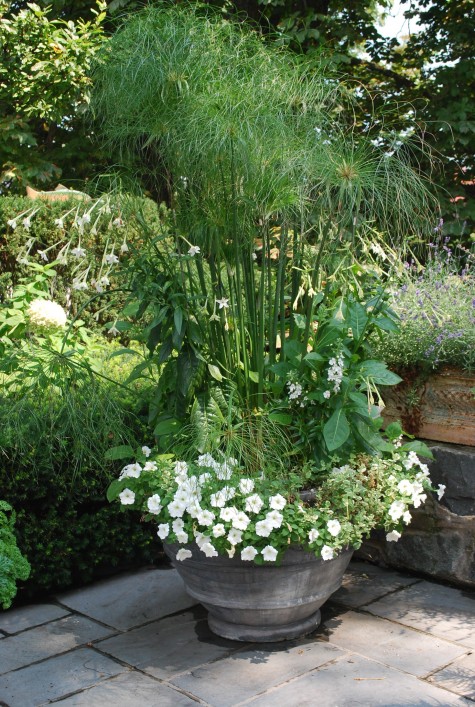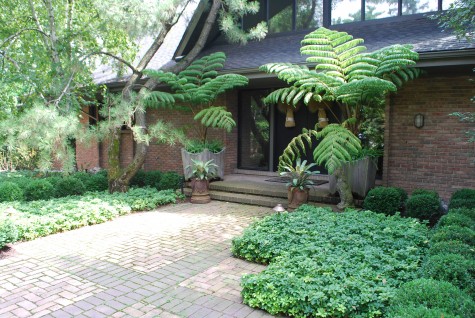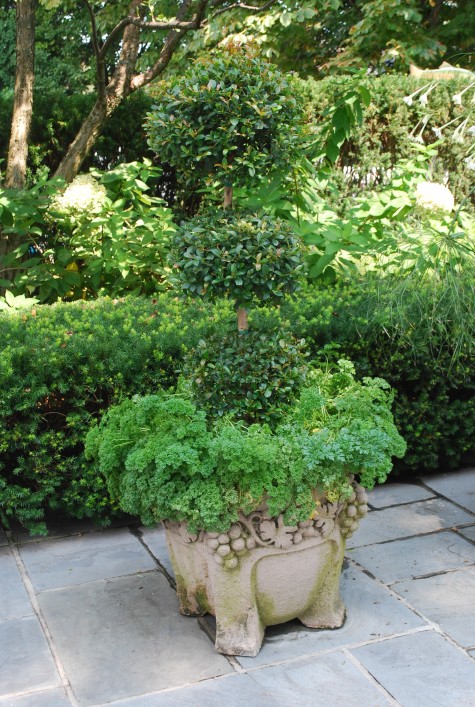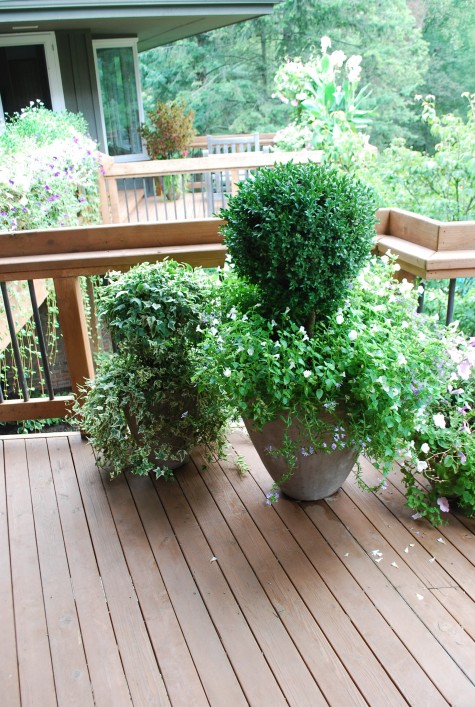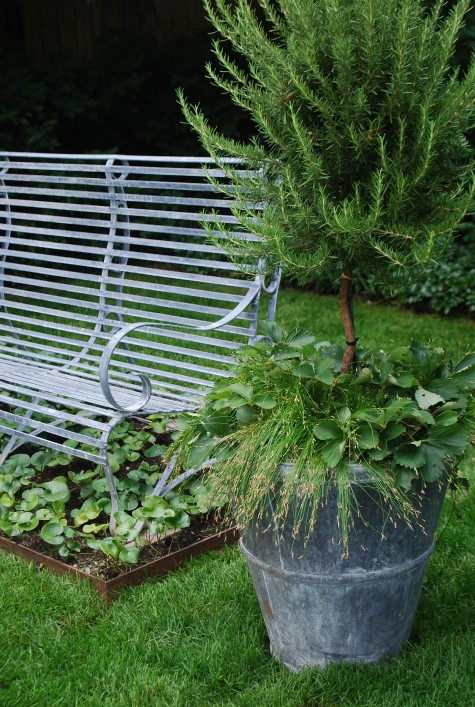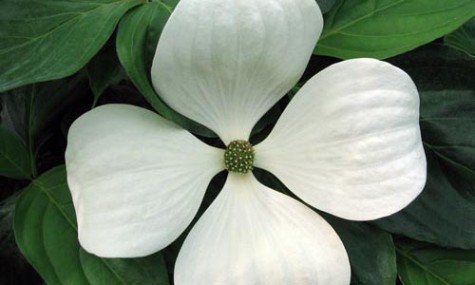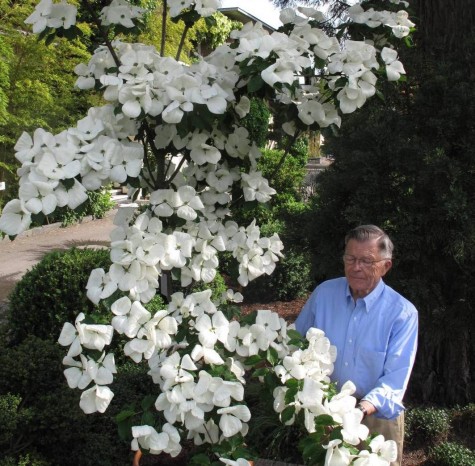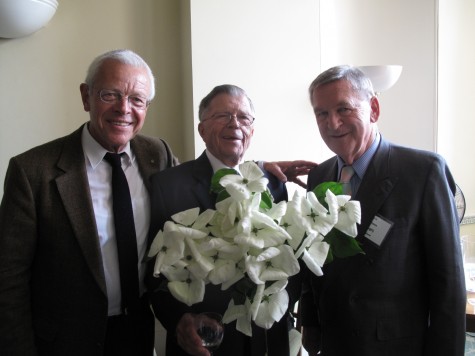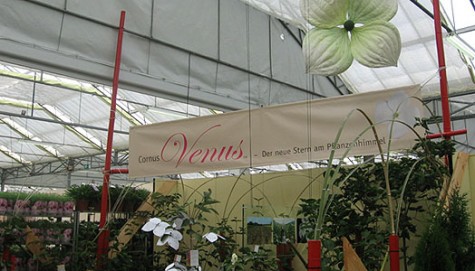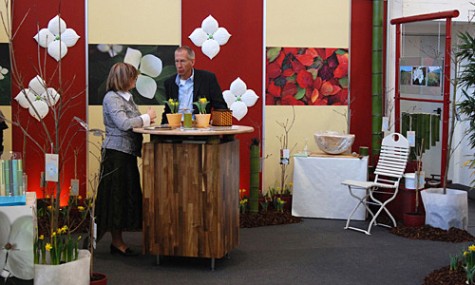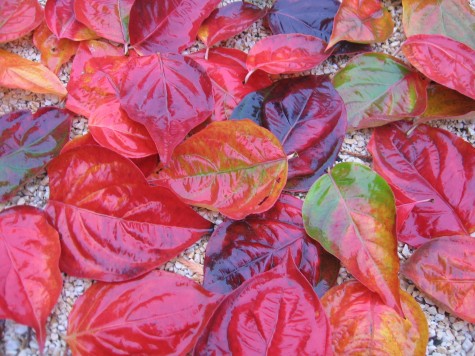 Some garden ornament is so irresistable that you don’t mind doing some restoration. This very old French cast iron and porcelain vase is dated on the side-Paris, 1827. That it was 183 years old, of great size, and unusual in its construction and surface-this made it a very intrigueing and compelling object. I arranged to purchase and ship it to Michigan from Florida-having only seen pictures.
Some garden ornament is so irresistable that you don’t mind doing some restoration. This very old French cast iron and porcelain vase is dated on the side-Paris, 1827. That it was 183 years old, of great size, and unusual in its construction and surface-this made it a very intrigueing and compelling object. I arranged to purchase and ship it to Michigan from Florida-having only seen pictures.
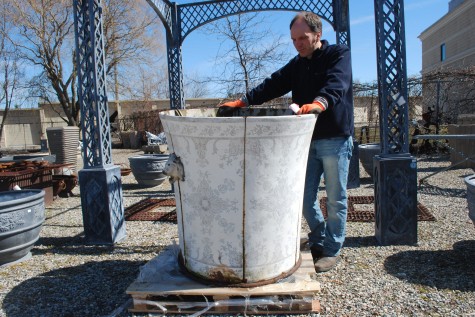
Though I expected to see considerable evidence of its age, pictures do not tell everything. I was enchanted with its worn porcelain surface; the original pattern is so beautifully faded. I had visions of it placed and planted in a landscape such that the benefit would be to everyone’s mutual satisfaction. The sheer scale of it was exciting. One of Rob’s pictures from Italy is of a massive Italian olive jar that served as a prop to an old climbing rose planted next to it. This vase brought the possibility of that level of romance to mind again.
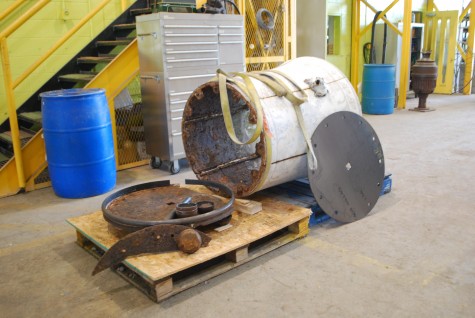
However, the vase had issues. The thick cast iron base plate had deteriorated considerably over its very long life. Buck doubted that the trip from Florida had anything to do with the fact that the base was in pieces. The bolts which fastened the base to the top had completely rusted through. It was just very old, and in need of some restoration. It took four people to get this piece over to the Branch studio. Buck had a 1/4 inch thick piece of steel cut to make a new base; the restoration project would have to get in his queue-at the end of the line.
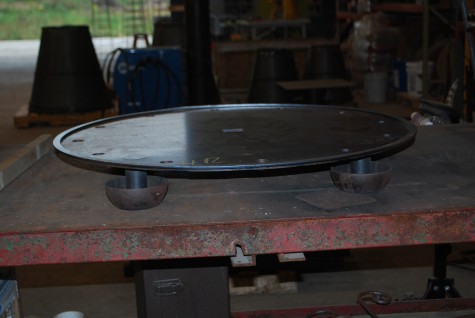 He had the base drilled with holes, hoping that he could weld what was left of the bolts to the new base. He would work on it as he had time; the new base and feet got completed in fairly short order. What was to come would take a lot more time, and be quite involved. It would have to wait until there was time. Early this summer a landscape project came along that was calling for this vase. My client fell for it just as fast as I had; the restoration process picked up speed.
He had the base drilled with holes, hoping that he could weld what was left of the bolts to the new base. He would work on it as he had time; the new base and feet got completed in fairly short order. What was to come would take a lot more time, and be quite involved. It would have to wait until there was time. Early this summer a landscape project came along that was calling for this vase. My client fell for it just as fast as I had; the restoration process picked up speed.
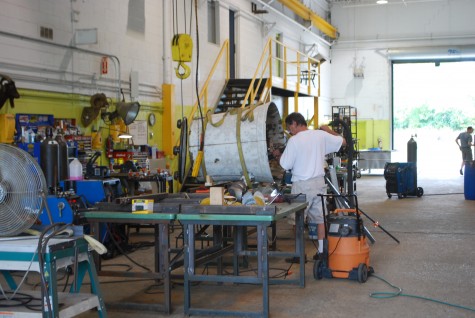 The first order of business-getting the vase in a position and at a height where he could work on it. A bridge crane in his studio which can lift and move up to five tons at a time is a handy gizmo at a time like this. He was able to thread straps through the bottomless pot, and set it on a work surface.
The first order of business-getting the vase in a position and at a height where he could work on it. A bridge crane in his studio which can lift and move up to five tons at a time is a handy gizmo at a time like this. He was able to thread straps through the bottomless pot, and set it on a work surface.
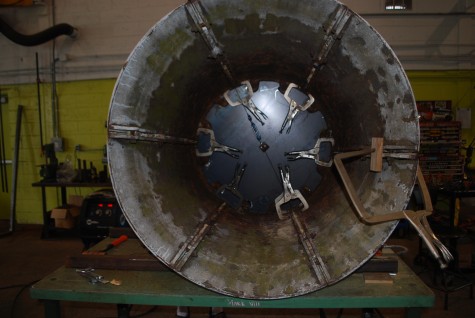 The vase is comprised of six separate cast iron panels. Each panel had two flanges which allowed each piece to be bolted to the next. Construction of course was dependent on the technology of the time. The inevitable spaces between adjacent flanges were stuffed with some kind of caulk which had dried, shrunk and otherwise deteriorated to an alarming degree. Once the vase no longer had a bottom, realigning all the panels to recreate the original round shape was a challenge.
The vase is comprised of six separate cast iron panels. Each panel had two flanges which allowed each piece to be bolted to the next. Construction of course was dependent on the technology of the time. The inevitable spaces between adjacent flanges were stuffed with some kind of caulk which had dried, shrunk and otherwise deteriorated to an alarming degree. Once the vase no longer had a bottom, realigning all the panels to recreate the original round shape was a challenge.
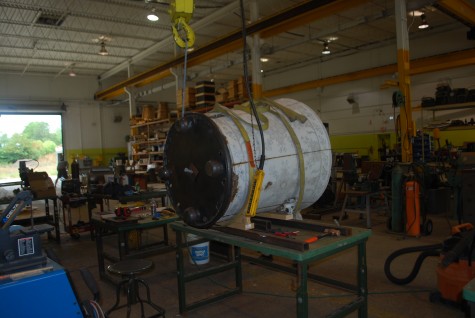 With the pot stabilized on the table, the bridge crane would help him maneuver the base into place. The process of fitting the new base to this piece took what seemed like days.
With the pot stabilized on the table, the bridge crane would help him maneuver the base into place. The process of fitting the new base to this piece took what seemed like days.
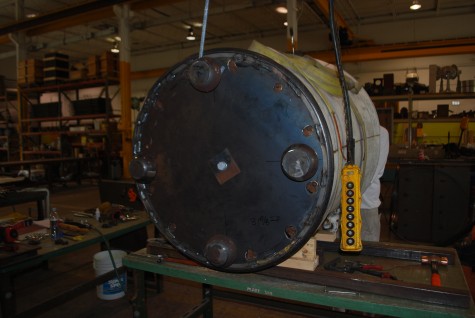
Buck finally called this morning to say vase and base were one again. He was able later to weld the old rusted stubs of the fastening bolts to the new base. He plans to finish the steel in dark grey automobile primer. I know it will be beautiful. The landscape installation is finished, and ready for the delivery and planting of this vase. I cannot wait.
